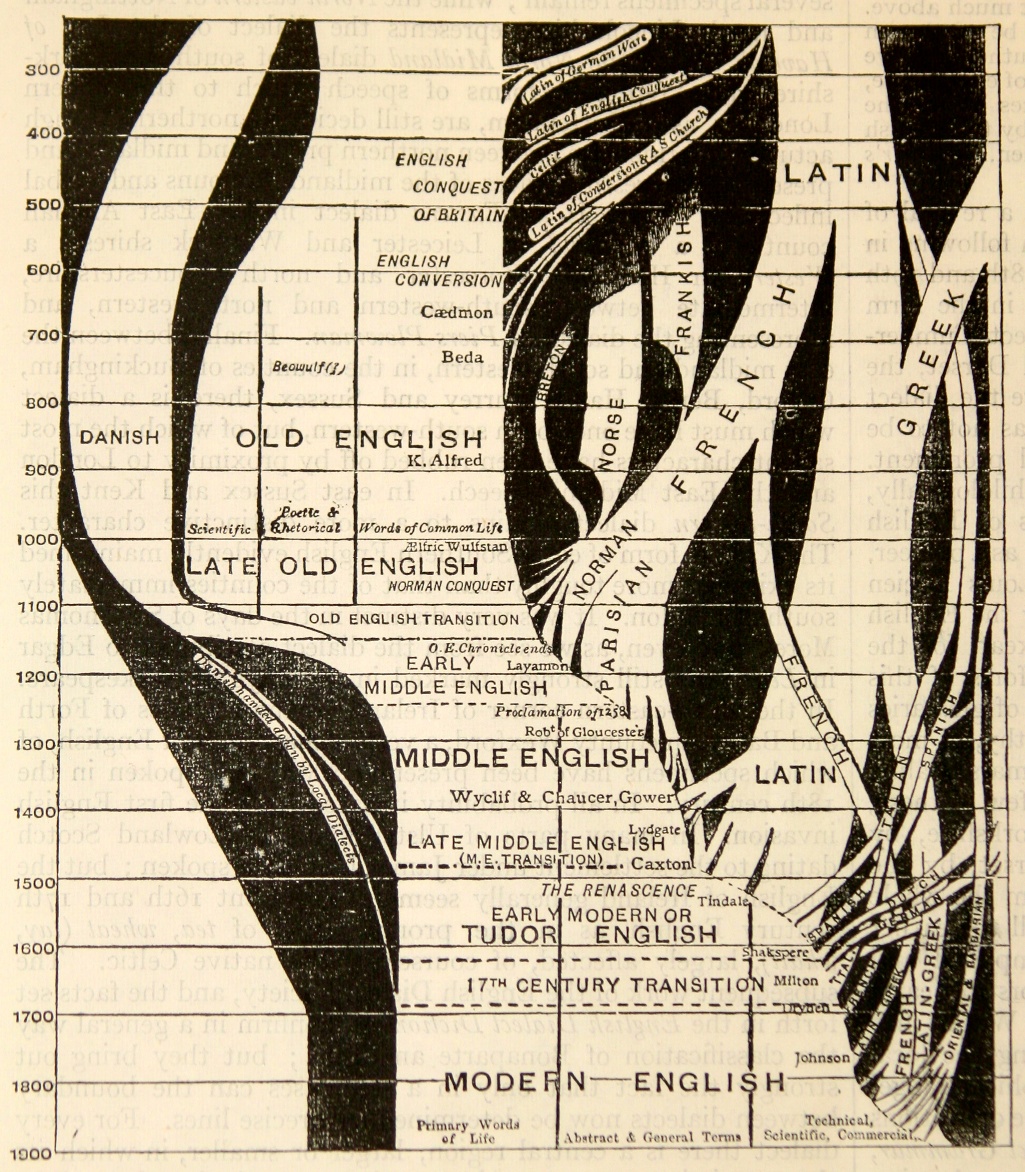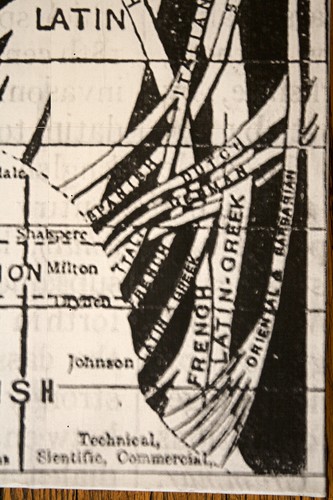When I was an undergraduate I wrote an essay on the "Oxen of the Sun" chapter of James Joyce's Ulysses, and the general idea of "history." In the course of researching that paper, I came across an image representing the history of the English language as a sort of nightmarishly complicated confluence of rivers. But I didn't note where I had found it, nor did I "use" it in the resulting essay. Since I became increasingly obsessed with this image over the years, I eventually went on a hunt for it. Five or six years after I first spotted it, I was reunited with the image this past winter, and can now introduce it to you. (Before I do so, click on it to enlarge—you'll be able to spot most of the details.)
English really is a strange language. It's a highly appropriate language to have taken over as the new "lingua franca," because it comes from all over. I knew about the collision between the Germanic Old English and Latin French before seeing this image; but there are, as we see, many others. I wasn't aware that Danish had such an influence, for example. Nor had I considered the "sneaky late arrival" of Greek into the technical language of the sixteenth century. This general division of labour between invading streams is interesting too—according to this chart, basically all of the words of daily life come directly from Old English, and basically nothing else does. It's hard to change our daily habits, English speakers, but we're marvelously open to new ideas!
Of course the diagram itself is interesting. On the one hand, it wants to show us how complicated and messy the history of the English language has been. On the other hand, it wants to make sense of this for us. As the course of the River English approaches the present day (this was produced around 1910), things become too complicated to represent—though the encyclopedic urge persists, and the diagrammer does absolutely everything in his power (it is surely a he!) to detail the smallest intricacies of the discontinuous influence of, say, "Oriental and Barbarian" (without specifying which!) tongues. And the lines do, in fact, resemble tongues—though more closely and increasingly the forked ones of serpents!
I'm sure that such a map would be completely impossible to produce today. The English language, in spreading and coming into contact with endless other languages, is always changing. And there is no longer—if ever there was—an English language, of course, but many. "Rich and mixed"—Virginia Woolf is right!
I'm sure that such a map would be completely impossible to produce today. The English language, in spreading and coming into contact with endless other languages, is always changing. And there is no longer—if ever there was—an English language, of course, but many. "Rich and mixed"—Virginia Woolf is right!
I am just as attracted to this image as an image. It has a lurid, organic, veiny quality. There's something thrilling and dangerous about all those tentacles! I therefore asked my friend Mardam Hammowicz to make one of his gigantic enlargements of this image for me. You can see the process on her Flickr page. This way of enlarging the image, with all its patched-together-ness, just reinforces the "message" of the image itself: that the language we speak and write in is a tremendous jumble.
It's a fine image to keep in front of one's face—and a fine lesson to keep in one's mind—as one writes!



No comments:
Post a Comment